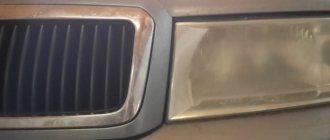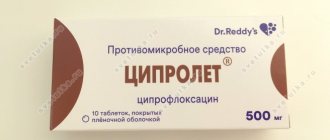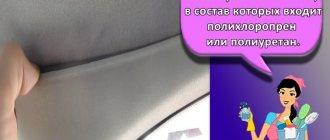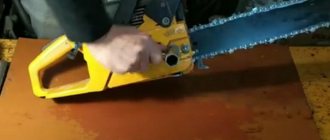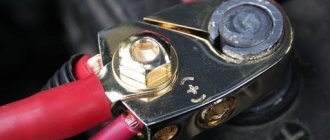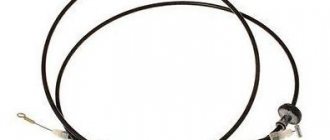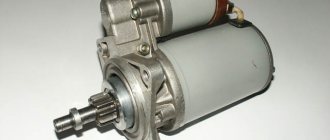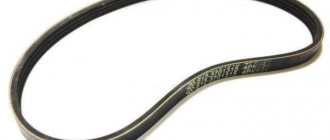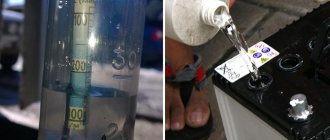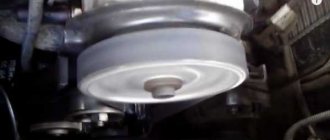The main features of metal and why it deteriorates
Aluminum is a kind of soft material that is often used in everyday life. It has a silvery-white color. It has several important features:
- the material is dense enough that it requires effort to damage it (of course, it all depends on its thickness);
- has high thermal conductivity (water in such structures heats up very quickly);
- aluminum does not rust (however, the material is not immune to the appearance of oxide, which in turn can seriously harm the metal).
Due to these properties of the material, it is very often used in the home and everyday life. For example, these are dishes, large cans, large tanks and other structures. From time to time (especially in the absence of proper care) they begin to deteriorate. At this stage, the question arises as to what can be used to clean such a surface.
Cleaning an aluminum pot using a soft rag Source poleznii-site.ru
Cleaning aluminum from corrosion and oxide
This circumstance applies more to the restoration of objects that are not used in dining rooms and kitchens. For example, you can find a special paste to add shine to car parts. A small amount of it is applied to a rag (hardness does not matter), and the damaged part is thoroughly wiped. This way you can quickly clean aluminum from rust and oxides, and the part will acquire a new appearance. As for tools with metal bristles, their use is highly not recommended. Otherwise, the spare parts will show signs of mechanical impact, which will be clearly visible in the sun. During the period of cleaning aluminum from corrosion, it is necessary to use personal protection, especially if the work is carried out indoors. These special products can release harmful components that damage the skin and respiratory system.
Cleaning aluminum parts from oxide
Cleaning aluminum oxide from oxide at home
If this is old dishes that have oxidized during long-term storage, then this kind of damage can be corrected in several ways listed below. They will also help remove blackness from the surface of the alloy.
Complex oxidation of an aluminum object in everyday life Source forum.xumuk.ru
Budget folk remedies
Using such techniques, you can not only clean aluminum efficiently, but also save a lot of money, since the procedure uses products that are available on the farm. We present possible ones:
- sorrel (but only from the garden, not greenhouse). Take a bunch of the plant and place it in the bottom of the dish that needs cleaning. Fill the container with water, put on fire and boil for half an hour. Then drain the solution and rinse the dishes under running water. Internal blackness and oxidized areas will disappear;
- soda. Take a heaped tablespoon of soda, pour it on a saucer, and then add water in such an amount that the mixture turns out not a liquid consistency, but a slurry. Apply the prepared product to metal stains and rub well in a circular motion. Then rinse with water. If necessary, repeat the procedure or leave the composition on the damage for 20-30 minutes to dry out;
- apple. Cut the fruit in half and use the inner half to thoroughly wipe the damage on the oxidized container. You can even squeeze out some juice. Leave for half an hour for the malic acid to take effect. Next, rinse off the remnants of the process under running water and wipe the dishes dry;
- lemon acid. This product is used for both small and large utensils, as it copes well with all possible types of damage to aluminum. The main thing is to select the right amount of ingredient. For example, to clean a pan or other type of container, pour out a packet of citric acid (it contains about 2 tablespoons of crystals) and fill it with two liters of water. Then put it on the fire and boil the composition for 15-20 minutes. At the same time, make sure that the water does not evaporate. After boiling, rinse the tank and wipe with a cloth. After this, before using the item, be sure to boil water in it to remove any remaining acid.
- "Coca Cola". Using a carbonated drink is only rational for deep containers. To remove, for example, dirt or oxide on the bottom of aluminum cookware, pour soda into the tank and leave for 1.5 hours. Then drain the solution and rinse the product thoroughly. Not only will the accumulated oxide disappear, but the inside walls of the cookware will also gain some shine.
Removing carbon deposits on an aluminum ladle using a napkin soaked in vinegar Source posudaguide.ru
Video
To figure out how to restore aluminum products to their original shine, radiance and cleanliness, we recommend watching informative videos:
Young mother, wife and part-time freelancer. Being a lawyer by training, I am accustomed to collecting and providing the most complete and reliable information. Constantly improves in the professional field and strives for personal growth and development.
The easiest way to remove scale and carbon deposits from the soleplate of the iron is with table salt. Pour a thick layer of salt onto the paper, heat the iron to maximum and run the iron over the salt bed several times, applying light pressure.
The dishwasher cleans more than just plates and cups. You can load it with plastic toys, glass lamp shades and even dirty vegetables, such as potatoes, but only without using detergents.
Before removing various stains from clothing, you need to find out how safe the selected solvent is for the fabric itself. It is applied in a small amount to an inconspicuous area of the item from the inside out for 5-10 minutes. If the material retains its structure and color, you can move on to stains.
If your favorite things show the first signs of gestation in the form of untidy pellets, you can get rid of them using a special machine - a shaver. It quickly and effectively shaves off clumps of fabric fibers and returns things to their proper appearance.
There are special traps to combat moths. The sticky layer with which they are covered contains female pheromones that attract males. By sticking to the trap, they are eliminated from the reproduction process, which leads to a decrease in the moth population.
Fresh lemon is not only suitable for tea: clean dirt from the surface of an acrylic bath by rubbing with half a cut citrus, or quickly wash the microwave by placing a container of water and lemon slices in it for 8-10 minutes at maximum power. The softened dirt can simply be wiped off with a sponge.
Stretch ceilings made of PVC film can withstand from 70 to 120 liters of water per 1 m2 of their area (depending on the size of the ceiling, the degree of its tension and the quality of the film). So you don’t have to worry about leaks from neighbors above.
Threads made of gold and silver, which were used to embroider clothes in the old days, are called gimp. To obtain them, the metal wire was pulled for a long time with pliers to the required fineness. This is where the expression “to drag out the rigmarole” came from - “to do long, monotonous work” or “to delay the completion of a task.”
An aluminum pan is lighter than pans made from other materials and heats up faster. But when it is used for a long time, it darkens, carbon deposits form on it, which “eats” into the metal. To ensure that your dishes last as long as possible in your household and maintain their original appearance, it is useful to learn a few simple tips on how to clean aluminum.
Aluminum products have certain properties
, which limit the use of these items in everyday life. Therefore, you should take into account certain nuances of cooking in aluminum cookware:
It will not be possible to scrape off carbon deposits from aluminum cookware. There are special ways to remove it.
Aluminum is a soft metal that is prone to oxidation
. Cleaning powders, steel wool and sponges leave scratches on its surface. However, even long-term use of aluminum products allows you to maintain their original condition, subject to certain recommendations:
Since dirt, dark spots, and whitish stains from food, water, and chemical detergents can easily form on aluminum products, you need to know how to clean aluminum cookware at home, choose the right cleaning products and not use harmful substances. How and how to clean an aluminum pan will depend on how dirty it is.
How to remove carbon deposits from aluminum
Aluminum cookware is not immune to carbon deposits due to its thin walls. Particles of food may stick to the bottom, which then burn. This problem can also be corrected using folk remedies. They will also return the shine to the products.
Application of tooth powder
Before the procedure, rinse the vessel in the standard way without attempting to remove dirt with abrasives. Then wipe the bottom dry and sprinkle it generously with tooth powder. Sprinkle a little water and leave it like that overnight. In the morning, use a soft sponge or silicone spatula to remove carbon deposits. It should come off easily from the bottom. If there are still black residues, now simply remove them with any detergent.
Using tooth powder to clean defects on aluminum Source temperaturka.com
PVA glue plus soap
This method is ideal for serious contaminants that appear on the aluminum surface. To prepare this composition you will need to follow a few simple steps:
- Take a damaged aluminum container and boil 3 liters of water in it, of course, if the volume allows.
- Then pour in 1 tablespoon of PVA glue and add 1/3 of a bar of laundry soap, after cutting it into thin strips.
- Cover the container with a lid and boil the mixture for 30-40 minutes, then pour out the mixture and rinse the container with dishwashing detergent, rinse with running water and wipe the surface.
If the result is not as expected, the procedure should be repeated without pre-washing using dish gels.
Grated soap for cleaning aluminum is combined with PVA glue Source vdomedela.ru
Vinegar and laundry soap
The next method is no less effective, and is also considered gentle. To use it, follow these steps:
- Take an enamel pan of such volume that it can easily accommodate the damaged aluminum cookware.
- Fill a container with water and rub a bar of laundry soap into it, and then add 150 ml of table vinegar.
- Dip the contaminated aluminum object into the mixture, place the enamel container on the fire and cover with a lid. Boil for 30 minutes. Then rinse the tank with a mild soap solution.
There are also a number of other folk remedies that will help cope with carbon deposits on aluminum kitchen utensils. Let's talk about them in the section below.
Other, no less effective methods of dealing with soot
Removing carbon deposits on aluminum cookware will not be a problem if you use one of the methods listed below:
- using dishwasher tablets. Fill a saucepan with water so that it covers the soot by two centimeters, then throw in the tablet and put the container on the fire, boil for half an hour, and then simply wash the vessel in cool water;
- household chemicals. But such compositions must be chosen with caution, since not all of them are suitable for aluminum. Using them is very simple, you just need to follow the instructions on the packaging or bottle with the composition;
- table salt. To remove serious carbon deposits from an aluminum pan, you need to pour warm water into it, dissolve two tablespoons of table salt (table salt will do), and then boil for 20 minutes and wash the product with a soft sponge.
To wash aluminum tanks from carbon deposits using household chemicals, you should give preference to gentle compositions that do not contain abrasive components. Ideally, use gels and preparations in the form of liquids, and a soft foam sponge should be used as an assistant.
Finish tablets are used to clean aluminum coatings without a dishwasher Source sportle.ru
How to get rid of soot
Since this has happened, and carbon deposits have nevertheless appeared on the walls of the aluminum pan, do not put off washing it for a long time: you won’t wash it off at all. Get down to business right away!
Here are a few ways to help restore your dishes to their original shine:
- Soaking in soapy water. The method is suitable for relatively light soot and if you react quickly to it. Usually, after soaking, minimal effort is enough to rid the walls of the pan of black color: just wipe them with a hard sponge. If it doesn’t help, then move on to the next method.
- Washing with soda. A traditional easy way to get rid of black deposits on the walls of aluminum cookware. Usually it is enough to rub the vessel with a hard sponge and soda for a while so that the carbon deposits begin to come off. If this does not happen, boil the dishes in a large container (basin or bucket), adding a glass of soda to the water.
- In the absence of soda, you can resort to regular table salt. If the contamination is inside, boil a strong saline solution until the carbon deposits begin to “peel off” from the walls. If outside, boil the pan in a deep container with the addition of a large amount of salt.
- Citric acid, used for preserving vegetables, will also help in removing carbon deposits from dishes. To do this, boil enough water in a saucepan to cover the “blackness”, add 2 tablespoons of lemon to it and boil for 10-15 minutes. After this, wash the dishes under running water using a special product.
- 9% vinegar. They pour it into the dishes with soot and leave it for 2-3 hours, after which they wash the pan with a hard sponge under running water.
Laundry soap 72%. Added in certain proportions to the above products to improve the effect:
- in soda - ½ piece;
- in vinegar - ½ piece;
It can also be combined with PVA glue in the ratio: 1/3 bar of soap (grate into shavings) and 1 tablespoon of glue per 4 liters of water. Boil the resulting solution.
Special chemical cleaning agents. For example:
- Schumanite is a rather aggressive solution, but very effective;
- Chister is also aggressive, but not so effective. Advantage - cheap;
- Amway is inferior in efficiency to Shumanite, but not as aggressive in cleaning properties.
These products should be used strictly according to the instructions to avoid unpleasant consequences!
To avoid unpleasant carbon deposits, try not to be distracted while cooking in aluminum cookware. And, of course, do not cook something in it that will certainly leave its mark inside. But if carbon deposits appear, don’t be discouraged and immediately start cleaning the pan, then the dishes will serve you for a very long time!
How to remove scale from aluminum cookware
Even after the first use, traces of scale begin to form on aluminum cookware. Of course, as long as this layer is not too thick, it can be removed using a simple washing gel. If scale has accumulated for months, then you need to act using radical methods.
Method one: using table vinegar
When using vinegar to descale aluminum cookware, it is recommended to follow the following algorithm to achieve effectiveness the first time. So, what actions need to be taken:
- Place half a bottle of 9% table vinegar into a damaged container;
- close the tank with a lid and put it on fire;
- bring the liquid to a boil, and then shake thoroughly;
- after the inner walls have been treated in this way, drain the solution;
- take clean water and boil, repeat boiling with water again.
After this cleaning method, an unpleasant sour smell remains, which will be released into the products cooked in this pan. To get rid of this annoying nuance, after boiling again, just put the lemon or orange peel inside, close the lid and leave for 15 minutes.
Cleaning an aluminum pan with vinegar Source polsov.com
Method two: cleaning with citric acid
Cleaning an aluminum kettle from scale is carried out using citric acid at a time. It is possible to repeat this removal method in case the scale build-up is too large. The algorithm is as follows:
- fill the damaged tank with one and a half liters of water and dissolve a packet of citric acid in it;
- put the dishes on the fire, cover with a lid and bring the prepared solution to a boil;
- after the liquid boils, open the lid and continue to boil the liquid for almost minutes;
- then leave the dishes until they cool completely, then rinse under running water; you can additionally boil them to remove any remaining acid.
It is allowed to combine lemon juice with citric acid when cleaning. This will give an even greater cleaning effect.
Cleaning an aluminum water heater with citric acid Source hughes.co.uk
Anodizing as a way to protect aluminum
To avoid having to constantly clean aluminum products, you can protect the surface by using anodizing technology. Thus, a film of oxides is formed on the parts, and the outer layer is also painted. First, the part is cleaned of plaque; to do this, it is sanded, immersed in oxalic acid and washed with water.
Then a special solution is prepared - an electrolyte. To do this, pour distilled water and sulfuric acid in a 1:1 ratio into a plastic container of a suitable size. The latter is an electrolyte for a lead-acid battery, which can be purchased at a car store.
Important! When mixing water and sulfuric acid, you need to be as careful as possible. Use thick rubber gloves and safety glasses, as a violent reaction occurs during mixing of the components.
Further processing will be carried out using the electrochemical method. To do this, the power source is connected in this way: the positive wire goes to the workpiece, and the negative contact goes to the electrolyte bath. That is, electricity is passed through the solution, and an oxide film will begin to settle on the aluminum part. The procedure takes approximately 30 minutes, after which the part is removed from the container and washed thoroughly.
Oxidation creates reliable protection. A part covered with such a film will also have an attractive appearance. It is quite difficult to damage this coating, which means that the protection will be as durable as possible.
Three ways to remove oxide film from a surface (1 video)
All methods and means (23 photos)
Cleaning sheet aluminum surfaces
If the aluminum has darkened, green oxidation spots have appeared, and the overall appearance of the sheet is quite old and unpleasant, this can be corrected through restoration, which involves several stages:
- Preparatory. Take a metal brush and remove old layers of paint (if any), oxidized deposits, and black spots from a sheet piece of aluminum. This procedure can be carried out manually or you can put a special attachment on the grinder to automate the process and speed it up.
- Grinding. Use a medium-fraction abrasive to correct visible defects, roughness, abrasions, and deep scratches. Next, take sandpaper and run it over the surface again. This manipulation will help level the aluminum sheet to a perfectly smooth coating.
- Working with the machine. This stage has its own nuances. To work on the tool, attach a special attachment for processing. Choose it depending on the characteristics of the sheet material, as well as the complexity of the work. Next, spray the sheet and polishing wheel with water. Every two minutes, turn off the device, rinse its nozzle, and re-moisten the aluminum. When finished, wash off all waste, put a felt attachment on the sanding machine and polish the aluminum plate to a perfect shine.
- Next, perform the finishing touch, which involves applying a polishing paste and finishing it to a mirror finish.
Cleaning kitchen utensils
In order to restore the shine of your kitchen utensils, you will need the following items and products:
- Water.
- Soft cloth or dish sponge.
- Vinegar or lemon juice, cream of tartar.
- Dish scraper.
- Mild detergent.
- Salt.
- Towel.
- A bucket or other large container if the outside of the dishes needs to be cleaned.
Having prepared everything you need, get to work:
- Wait for the pot or pan to cool after cooking.
- Remove all grease and dirt from the surface of the cookware. Add dish soap to warm water and wash off any remaining dirt.
- Use a dish scraper to scrape off any residue and food residue. If you cannot completely clean the pan with a scraper, then pour some water into the utensil, bring to a boil and scrape the dirt from the metal with a wooden spoon.
- Prepare an acidic solution: 2 tbsp. Dilute tablespoons of cream of tartar, white vinegar or lemon juice with 1 liter of water.
- Pour the solution into the pan.
- Place the utensil on the fire and bring the liquid to a boil.
- Boil the solution over low heat for 10-15 minutes.
- As soon as the aluminum brightens, turn off the heat.
- Wait for the pan and contents to cool.
- Pour the solution out of the container.
- Gently scrub the pan or pan again with the scraper to remove any remaining dull spots.
- Wipe the dishes with a clean towel.
Helpful Tips:
- Do not use steel wool for cleaning as it may scratch the surface with disastrous consequences.
- If you want to clean the dishes not only from the inside, but also from the outside, then place them in a large pan or bucket. Pour an acidic solution at the rate of: per 1 liter of water - 2 tbsp. tablespoons of weak acid (vinegar, lemon, cream of tartar). Place the container on the fire. Boil for 15-20 minutes to remove oxidation from the aluminum.
- If you don’t have a large container, you can clean the outside of the pan with a cut lemon, after dipping it in salt.
- The acidic solution reduces the tarnishing of the metal. Therefore, to clean the surface of the dishes, use the juice of acidic fruits and vegetables, such as rhubarb or apples. Instead of a solution, you can put the peels of sour apples into the boiling water - in this simple way you will be able to clean aluminum from oxidation.
- If you don't want to waste time boiling utensils, then use a mild aluminum cleaner. Use it as you would a soft dish brush or soap. Wipe the dishes with a sponge soaked in cleaner, and then rinse with water.
Important! There are many conjectures and myths associated with aluminum cookware. If you use one and like it, find out whether aluminum is really bad for your health.
Other cleaning methods for difficult aluminum defects
If it is possible to implement more complex procedures for cleaning aluminum at home, you can give preference to the following methods. They will allow you to rid the alloy surface of dirt, blackness and oxide in just 10-15 minutes without using much physical effort.
Using a chemical reaction
To follow the instructions, you need to prepare a special tank and place a steel plate on its bottom in accordance with the size of the container. Next, the tank should be filled with a solution of three components: nitric, sulfuric and phosphoric acid.
The prepared composition must be heated to 120 degrees, and then an aluminum object that needs cleaning must be placed in it. You should soak it in the liquid for 35-45 seconds, and then remove it and rinse it with regular running water. It is advisable to repeat this algorithm 5-6 times to obtain a high-quality result. To add shine after drying the material, it must be treated with pure nitric acid.
Polishing an aluminum tank chemically gives this result Source drive2.ru
Important! Carry out all work carefully, using personal protective equipment (overall clothing, gloves), as acids can seriously damage the skin.
Electric polishing
It is recommended that this procedure not be carried out inside a living space. You can do the manipulation in the garage, basement, utility room. To perform cleaning you need:
- prepare a bath with a special lead layer;
- pour the acid composition into it and heat it to boiling temperature;
- connect lead cathodes (two pieces) to the aluminum object;
- immerse the object in acid and pass a current with a density of 10-50 A/dm2;
- soak the aluminum in an acidic environment for five minutes.
This method is considered very dangerous due to direct contact of electric current and acids.
Decorative etching
Chromic and phosphoric acid will be used for this purpose. They are combined into a single solution in a 1:1 ratio. This composition is affected by anodes, heating the product to 50-80 degrees when a voltage of 25-40 Volts is applied.
Etching an aluminum plate Source drive2.com
Treatment is carried out for 15-20 minutes. During this time, the product acquires an interesting chaotic pattern. After the procedure, the item is washed with water and then dried. To complete, the surface is painted with a special coloring composition for organic matter. After thorough drying, the aluminum object can be used, and contamination will not appear for a long time.
Features of cleaning from sunflower oil
A viscous liquid is a lipid mixture that does not interact with water. Therefore, other methods and means are used for removal. Substances are selected that can penetrate the fat molecules and remove them from the surface.
Mustard
The product is used in powder form. The bulk mixture is diluted with hot water. The proportion is as follows - for 1 liter of water take 2 tbsp. l. mustard powder. The ingredients are mixed so that there are no lumps, and the liquid is poured into the bottle up to the neck. After 2-2.5 hours, the liquid is drained and the container is rinsed with clean water. Repeated cleaning procedure will improve the effect.
Flour
The bulk mixture is used due to its ability to absorb various liquids. The bottle is completely filled with water, after which flour is added. The result should be a white liquid. The container is turned upside down so that the dirty places are covered with the solution. After a while, a handful of rice is added to the vessel. After shaking, the bottle is emptied of its contents. After washing the vessel with water and detergent, rinse.
Boiling
This method comes in handy if you have accumulated a lot of dirty containers and don’t have enough time to clean them. A large saucepan is filled with dirty vessels and filled with water to the very top. A small amount of detergent is added to the water.
The pan with the container is placed on the stove over medium heat. Boiling should be carried out for 25-35 minutes. After turning off the stove, leave the contents of the pan to cool. The container is taken out and washed with clean water. It is advisable to use a piece of laundry soap instead of detergent.
Video description
Polishing aluminum java parts
Garage experiments
The following list of formulation options has been tested in garage conditions, and they are capable of cleaning even the most serious stains on aluminum objects. We invite you to study the details and become familiar with the nuances of preparing such products.
- Borax. This product is considered effective for removing a dense film under which oxide has formed. To restore the aluminum coating, you need to take 10-15 g of borax into a glass of water, and then stir it with three drops of ammonia. Apply the prepared solution to the damaged area on the aluminum alloy, leave for 40 minutes, and then wash off all residues from the surface with warm water.
- Table vinegar. To prepare the solution you need to take 1 liter of bite and 1 sachet of citric acid. To remove carbon deposits from the inside of the vessel, the prepared product must be poured into the tank, brought to a boil and boiled for 10-15 minutes. During this time, a chemical reaction occurs in which all the carbon deposits are well peeled off from the bottom of the dish. At the end of boiling, the solution must be drained so that the bottom does not remain dry, and the container must be left until it cools completely. Then use a sponge to remove any remaining dirt.
- Sodium hydroxide. This cleaning product is easy to make at home. Soda in the amount of 200 g should be mixed with 7 liters of water, pre-heated to 60 degrees. It is important to make sure that the composition is homogeneous. Then use a sponge to rinse the contaminated part.
Using borax to clean aluminum surfaces Source russian.alibaba.com
The compositions described above cope well with serious contamination on spare parts, car parts and various tools.
How to remove oxidation from aluminum on an engine?
Let's pour some liquid over the KPE, and then use a stream of warm water to wash everything off under pressure.
Engines are washed in this way perfectly. If only we could find something for aluminum. A suitable liquid is caustic soda or potassium - alkali (not lye). Works perfectly without any jet. Everything becomes like new. White matte color. Be careful with dilution. Read about the process on the internet.
Search in railway battery services, etc.
If you can't find it in its pure form, it is found in drain cleaning fluids. It works too.
* Products made of aluminum and its alloys are etched in alkali solutions of different concentrations depending on whether their surfaces are polished (metal polishing) or unpolished: polished surfaces are etched in 1-2%, and unpolished ones are etched in a 5-10% caustic solution sodium hydroxide at a temperature of 60-70°C for 1-1.5 minutes.
The degreased part is immersed in the solution and immediately removed or wiped with a dampened swab, and after drying, wiped with a clean rag. To brighten aluminum, the oxide film is easily removed by a mixture of borax solution (50 g/l) and 25% ammonia (5 ml/l).
Aluminum products pickled in alkali are washed and illuminated for 5-10 minutes with a solution of nitric acid (concentrated) in water (30-40 and 100 parts by weight, respectively). When brightening products made of silumin - aluminum alloys with silicon (alloy AL2, AL4, AL9, VAL5) - add 1-3% hydrofluoric acid to nitric acid and treat them for 5-10 minutes.
After acid etching, the part is washed in cold and then in hot water.
Aluminum parts are etched in nitric acid only after its chemical oxidation. In electroplating, aluminum is treated in other solutions after alkali.
* To make aluminum cookware shine like new, prepare the following composition. For half a bucket - a bucket of warm water 100g. silicate glue (sold in office supplies) and 100 g of soda ash (sold in hardware stores). Bring all this to a boil and add our dishes to the composition. Boil for 20-30 minutes, then turn off and leave the dishes in the composition until cool. (At the same time, you could also put gas burners there.)
* Boiling a weak solution of baking soda in a darkened aluminum pan will give the inside of the pan a nice matte white color.
A suitable liquid is caustic soda or potassium - alkali (not lye).
If you can't find it in its pure form, it is found in drain cleaning fluids. It works too. How it works, cheap and cheerful, I used a liquid called Mole
Questions about how and how to clean aluminum are relevant for many.
Aluminum products are distinguished by their lightness, convenience and beautiful shine, but as a result of use they quickly darken, become covered with plaque or oxide, which spoils the aesthetic appearance and interferes with the full use of the item. To restore the shine and purity of aluminum, use folk remedies and special household chemicals, follow the recommendations for care and use.
General recommendations
Aluminum is a soft metal that requires careful handling during operation and cleaning. To clean products from various types of contaminants and not damage the material, follow simple recommendations:
- Do not use metal scrapers or brushes, hard scourers or sharp objects. These tools damage the surface, leaving scratches and other unsightly marks. After such treatment of the dishes, aluminum particles can get into the food, which will negatively affect the taste of the dish and its benefits.
- Do not clean aluminum alloy products with abrasive agents (sand, powder).
- Kitchen utensils should only be washed after they have cooled down. Hot metal deforms when interacting with water, and it is almost impossible to return its original appearance on your own.
- Do not use aggressive substances such as acids or alkalis for cleaning. They spoil the aesthetic appearance, and the resulting chemical reaction can lead to the release of toxins or heavy metals that are hazardous to health.
- To achieve the desired effect, choose a cleaning method and cleaning product based on the type and degree of contamination.
- Do not wash aluminum cookware in the dishwasher. Temperature changes negatively affect the metal and increase the risk of deformation and corrosion.
- To make the product shiny, polish the surface with a sponge dipped in a solution made from borax and ammonia in a 3:1 ratio.
Do not wash aluminum cookware in the dishwasher.
Aluminum is susceptible to oxidation. As the product is used, the oxide layer grows, which leads to the appearance of dark spots that cover the entire surface or individual parts.
* To make aluminum cookware shine like new, prepare the following composition. For half a bucket - a bucket of warm water 100g. silicate glue (sold in office supplies) and 100 g.
[/attention]
(At the same time, you could also put gas burners there.)
General recommendations
Features of cleaning aluminum cookware using gentle methods
Since aluminum alloy itself is soft and can easily be damaged, you should give preference to safe cleaning methods. These include the options below:
- take borax, ammonia, GOI paste. Mix the first two components and rub the body of the aluminum cookware in places where there is a defect. You can treat the surface completely. Then rub the coating with GOI paste to complete the polishing;
- Light contamination on the surface of aluminum cookware can be corrected using a mixture of soap, ammonia, table vinegar and table salt. All components are used in the same ratio;
- products for glass and porcelain. Such compositions can be purchased at hardware stores. They do an excellent job of removing dirt on aluminum surfaces. Such compositions easily remove dirt and also add shine to the dishes after the cleaning process is completed.
For contact with soft alloy cookware, it is recommended to use soft sponges, rags and microfiber cloths with no abrasive elements or bristles.
Important! It is strictly forbidden to use metal brushes. They inevitably damage the surface as they create deep scratches. As a result, even after numerous further polishings it will be impossible to achieve shine. The coating will forever remain matte and will now be even more exposed to dirt and oxides.
Cleaning aluminum car wheels using industrial chemicals Source drive2.ru
How to remove oxidation from aluminum - Metals, equipment, instructions
Metal is a material that has useful mechanical properties. But, nevertheless, over time it acquires an undesirable coating. And then the question of how to remove rust from metal becomes relevant. The article will list several accessible and effective ways to combat this problem on the following types of material:
- ferrous metals, steels and alloys;
- non-ferrous metal;
- fabrics.
Detailed recommendations are provided on how to properly clean surfaces. Brief tips are also given on how to protect the product from rust.
After a long winter, summer residents and rural residents begin painting metal fences, benches, and tables on their property.
But before they begin the actual painting work, they remove old paint and rust using a very stiff wire brush.
It is this that makes it possible to remove unwanted deposits from the surface of the metal, and also prevents further penetration and destruction.
Removing rust with a wire brush
This technique is good only and only if you plan to treat the metal surface with paint or anti-corrosion liquid/enamel. This method is also effective if the rust is only on the surface.
But what should you do if you need to get rid of it not a fence made of iron rods, but, for example, a tank or even a washbasin? First, let's list how to tidy up ferrous metal products.
Do not laugh! True, some food products can fight corrosion. Now you will find out exactly what methods exist to remove rust from a kitchen sink.
Lemon juice and vinegar
Take regular lemon and apple cider vinegar. First, assess the scale of the work. If you just need to clean the bottom of the sink, squeeze half a lemon into a glass or bowl. Perhaps you will get one spoon (tablespoon). Pour the same amount of vinegar. That is, you make vinegar and lemon in equal proportions. Stir.
We suggest you familiarize yourself with To make gladioli last longer in a vase
Removing rust with food products
To avoid accidentally pouring all the liquid into the drain hole, it is advisable to plug it with a stopper or at least a bag. Spread lemon juice and vinegar over the dirty surface. Warn your household so that no one uses the washbasin for two hours. After the specified time, take a clean rag and wash the bottom and walls. The rust should come off easily.
Baking soda and water
This method is only good if the rust has not penetrated deep into the surface. If this condition is met, you can proceed.
Removing rust with soda
As a rule, it is advisable to wash metal dishes and the same washbasin with soda and water. What should be done? Take, for example, a tablespoon of soda and pour it into a cup. Next, pour in just a little warm (never hot) water and stir. You should get a thick paste. This paste should be used to lubricate the rust. After half an hour, scrub the surface with a steel wool.
The world-famous Coca-Cola and Pepsi are unsafe drinks for the human body. We can talk about the harm for hours. But people buy them to...remove rust from metal! Now can you imagine what a terrible thing this is for your stomach?!
Removing rust with carbonated drinks
So, how to remove rust from metal using soda? Many motorists use this method to process small parts and large elements of their car. Often an old car requires serious repairs, and many nuts and bolts are “overgrown” with rust. In this case, you can buy one can of Coca-Cola, cut out the top and throw small parts into it.
Remove rust with Coca-Cola
Non-ferrous metals, like ferrous metal, can also acquire rust over time. But the ways of fighting are still different. You can use the same food products. For example, rust can be removed from brass products using:
- flour,
- salt (1 teaspoon),
- white vinegar (120 grams).
Salt and white vinegar are mixed in a container. You need to add enough flour to make a paste. This mixture is applied to the surface for half an hour and then washed off.
Removing rust from aluminum
But Alka-Seltzer tablets, which are sold in pharmacies and are intended to treat the liver, perfectly remove rust from aluminum objects. If the products are small and the coating is superficial, then fill the glass halfway with water and throw in one or two Alka-Seltzer tablets. Wait 5-10 minutes. Then rinse thoroughly.
Baking soda and water
Basic rules for cleaning aluminum cookware
Any utensils need to be cleaned from dirt; only aluminum utensils are subject to mandatory rules, which we will discuss below.
- Before any manipulation of cleaning aluminum kitchen items, it is necessary to create a protective film for them. This is done by first washing and drying the item.
- Then vegetable oil is poured onto the bottom, approximately so that its level rises 1.5-2 cm above the bottom. Next, add regular table salt and distribute it evenly throughout the container by rocking. At this stage, it is important that the walls of the tank are also used to at least half the height.
- Afterwards, place the dish with oil on the fire and wait until the smell of burnt oil appears. Next, remove the aluminum container from the heat and let it cool naturally. After this, you can use any of the above cleaning methods, chemical or mechanical.
This preliminary manipulation is carried out with the aim of forming a protective layer that will prevent waste from penetrating deeply into the alloy.
Cleaned bottom of aluminum cookware at home Source onlinetrade.ru
How and with what to clean aluminum
Aluminum, due to its great strength and lightness, has gained high popularity in the production of pots, ladles, spoons, forks and other similar accessories. But the aggressive environment that is the norm in the kitchen has a negative impact on the alloy. This is expressed in the form of stains, oxides and plaque. You cannot use such utensils, and buying new ones can be expensive. There is only one thing left to do - to do the restoration yourself.
How to clean aluminum
Features of cleaning aluminum
If preventative care is carried out periodically, “difficult” plaque is unlikely to form. However, it is a tedious task and people prefer to do the work at the last minute. There is a lot of information on how to effectively clean aluminum, and here are two of the simplest:
- Mechanical type. Suitable for smooth surfaces, without a relief pattern.
- Chemical type. Approved for products with complex surface roughness.
At home, you will need fruit acid, sodium bicarbonate, and detergent. You will also have to prepare a cotton towel, a soft sponge and a suitable container. As an alternative, you can buy a specialized paste, however, it has many harmful elements, and cleaning aluminum items is not always recommended.
There is no need to use metal brushes during the work. The iron bristles will scratch the fittings, erasing the first protective enamel. This will affect both the appearance and properties of the utensils. And the aluminum products themselves will suffer irreversible damage.
Light weight, uniform heating, shiny appearance – these are the parameters for which aluminum utensils are valued by many professional chefs and housewives. It is important to note that things from this component appeared a long time ago, and even then people understood the rules of care. For this they used sorrel and apple juice, onions and kefir. Yes, there was no chemical way to clean aluminum from dirt then, and the whole procedure was very long, but the homemade version is always safer and more environmentally friendly.
Household chemicals for cleaning aluminum
Universal oxide cleaners are something else that can be used to clean aluminum. But such a choice will lead to a loss of brightness, because the composition contains many chemicals. For best results, it is recommended to do the following:
- Do not rinse hot dishes. High temperature changes have a detrimental effect on the characteristics of almost any cookware;
- Do not scrape burnt food with a knife. Doing this will leave streaks and make it more difficult to clean the aluminum in the future. It will also be impossible to restore scratches;
- wash by hand only. The use of a dishwasher (due to high temperatures) is not permissible;
- During maintenance, do not apply strong or alkaline preparations, since it will not be possible to clean aluminum from oxidation without harm. Concentrated mixtures will cause the metal to darken.
Knowing and applying these features will extend the life of your kitchen utensils.
There are several good methods for washing off various cooking marks and burnt layers, which are used depending on their complexity:
- Blackening. To get rid of it, an sour mixture is prepared, consisting of kefir or sour milk, cola, and cucumber pickle. The object is immersed in the consistency and remains for 12 hours.
- Another effective way is sour apples. They are cut into slices, and the required area is wiped with the inner zone. If necessary, repeat the steps. At the end, everything is washed and wiped with a (not hard) rag.
- Contaminants in the form of soot can be wiped off with alkali. It is poured into a burnt container and placed on a gas stove that is turned on. It is better to choose the maximum flame so that the reaction occurs faster. After boiling, remove the container from the heat and allow it to cool completely. It should be noted that this technology is perfect for eliminating other contaminants of any complexity.
Soot Darkening of aluminum products
In such moments, there is no need to be afraid of experiments, since none of the varieties will cause damage. There are also a number of advantages: the availability of components, their low cost and safety.
Choice of product
If the task is not just to get rid of blackening, but also to maintain the shine of the surface, then you will have to carefully select the substance. An alloy of this kind is soft and can be damaged with a simple hard rag. Small scratches will ruin the entire image and make the surface matte. However, you can correct the situation if you purchase a regular polishing agent. For example, GOI paste can perfectly cope with this problem. As for the safe elimination of flaws, give preference to more gentle methods:
- soap solution;
- food acids;
- salt;
- office glue.
How to properly use aluminum items at home to avoid complicated cleaning methods
The following recommendations will help to maintain the attractiveness and appearance of cookware and other aluminum items used in everyday life for a long time:
- After preparing food (whether it is liquid or not), all food should be transferred to enamel, porcelain or ceramic dishes. This will avoid the appearance of dark spots;
- Be sure to carry out preventative cleaning of carbon deposits. This procedure should be carried out at least once a week, provided that the dishes are constantly used for cooking or heating water;
- Washing such dishes should only be done using special soft sponges, for example, standard foam sponges, without using the hard side. Only baking soda in combination with running warm water can serve as a gentle abrasive. But you can’t use this technique every day;
- When choosing household cleaning chemicals, be sure to ensure that the label indicates that the composition can be used for aluminum cookware.
Please note that if you need to wash industrial parts (automobile parts and other components) from contaminants and oxides, you should use formulations in which the pH is neutral.
An aluminum pressure cooker needs proper care after cooking Source vfl.ru
Important! For fairly large soft alloy items, special liquids or gels are used to clean metals. They contain a complex chemical formula that copes with severe stains. In the case of using such compositions, be sure to thoroughly rinse afterwards.
Product for cleaning aluminum until it shines Source zhenskiehitrosti.ru
Aluminum etching
Aluminum is perhaps the most common metal in everyday life. In almost every home there are many small objects made of aluminum, this includes various kinds of key rings, gift imitation knives, metal coatings for flash drives, etc. - the list can be continued almost endlessly.
It is quite natural for any man to want to make his small accessories unique. For metal objects, the idea of improvement comes naturally: engraving. To engrave products, you can use a laser engraver. However, this method is not suitable for aluminum.
The melting point of the metal is 600 degrees Celsius. It is difficult to find an engraver for engraving metal with such a melting point, but it is possible. But we have to take into account the oxide film that covers the surface of the metal when it comes into contact with oxygen. And the melting temperature of this film is about 2000 degrees Celsius.
This means that the most common method of applying engravings and inscriptions, thermal, is not suitable. It is in such situations that it is worth remembering another method: etching.
Note that etching can be both artistic (to create drawings and engravings on the surface of the metal) and technical, with the aim of clearing the metal surface of the oxide film and making the metal suitable for further processing.
Aluminum etching can be done in two ways:
- Electrolytic method.
- Chemical method.
We will analyze each of the methods, as well as their implementation at home, in detail.
Process description
The point of the aluminum etching reaction is to remove a thin layer of metal from the surface. In industry, this is how they get rid of cracks, chips, scratches and oxide film on the surface. The procedure helps prepare the metal for further processing.
When it comes to chemical etching, aluminum is dissolved by acid or reduced to alkali. The holding time of the metal depends on the solution and is always strictly standardized. If the reaction time is not observed, the solution will remove too much metal. Within the industrial sector, losses of a few grams per reaction can grow into total losses of tens or hundreds of tons.
If we are talking about artistic grass, then the electrolytic method is more often used, which involves the reduction of aluminum in an electrolyte solution. In order to create an inscription on the metal surface, it is first coated with a protective compound or film. A prerequisite is that the film adheres tightly to the metal surface. The next step is to make a hole in the film or composition in the shape of the future engraving. As a result of an electrochemical reaction, the solution collects metal exclusively from the future inscription. The reaction time for aluminum art etching is also limited; too deep engraving can cut your fingers.
Both in home creative environments and in industry, the use of protective equipment is mandatory. If we are talking about a chemical process, the following personal protective equipment is required:
- Thick rubber gloves.
- Respirator with eye protection.
- Apron.
It is also worth remembering that acid baths are made of wood or concrete; the service life of one bath does not exceed 2 years, regardless of the activity of use. Aluminum etching solution
Chemical weeding can be carried out in the following solutions:
- Ferric chloride. Etching aluminum in ferric chloride involves the active process of releasing the metal into acid and its deposition at the site of etching. This means that the engraved area will have to be constantly cleaned to free it for further reaction. Therefore, in industrial conditions, ferric chloride is used very rarely for etching. But the solution is quite suitable for home use. Etching should be carried out at a rate of 0.1 mm per minute. Engravings with a depth of 0.5 mm, filled with paint, look quite aesthetically pleasing.
- Caustic soda. Etching aluminum with caustic soda involves the use of household chemicals. The most suitable is the dry variation of the anti-sewer blockage product “Mole”. A standard package of the product is poured into a faceted glass of warm water and etching is performed. For a beautiful engraving or cleaning a metal surface, 3-4 minutes of reaction is enough. Please note that the reaction produces harmful gases and should therefore be carried out in a well-ventilated area. The optimal solution temperature is 70-80 degrees.
- Orthophosphoric acid. Etching aluminum with phosphoric acid involves the use of 10-20% phosphoric acid. For the reaction, the solution is heated to 40-50 degrees. Depending on the initial state of the metal, the reaction takes from 40 seconds to 2-3 minutes. The use of alkalis, orthophosphoric and hydrochloric acid is unacceptable in electrical engineering. If in the future you plan to use an aluminum part for use in electrical components or homemade radio assemblies, it is better to use a different etching mixture.
- Nitrogen. Nitric acid etching is not suitable for use in artistic engraving. Nitric acid is used, usually after alkali or to prepare the surface before painting. As a result of etching of metal in alkali, a dark layer of metal sludge is formed on the surface, which is formed as a result of the reduction of the metal into the volume of the alkaline solution. In order to give the product an aesthetic appearance, a 15-20% solution of nitric acid is used. Optimal etching is at room temperature of the solution. 2-5 minutes are enough for the entire reaction.
As mentioned earlier, an oxide film forms on the surface of aluminum. Most chemical solutions are used for the so-called brightening of the metal surface. In other words, to remove sludge from past manipulations or prepare the metal for future processing.
How to properly wash aluminum with household chemicals
It is better to wash any aluminum utensils separately from all other cutlery. It is also not recommended to put it in the dishwasher with glass plates or stainless steel items. It is advised to follow the following steps to rid such utensils of contamination:
- Fill a bowl with warm water and add a few drops of dishwashing detergent (neutral acidic and suitable for aluminum).
- Mix thoroughly and use the soft side of the sponge to gently rub the stain directly into the water. Leave to sit for 15 minutes.
- Next, pour out the cooled water and apply a little baking soda to a damp sponge, soak it thoroughly.
- Then rub the stain until a paste of waste is formed. Repeat cleaning if necessary. Afterwards, rinse the dishes thoroughly with water.
Washing aluminum cookware with a burnt bottom Source 1tv.com
Recommendations and care tips
Before using aluminum cookware for the first time, it is recommended to calcine it thoroughly. To do this, it is recommended to pour a small amount of sunflower oil and a tablespoon of salt into the bottom of the pan, and then keep it on the fire for a while, stirring the salt. After completing the procedure, it is recommended to wait for the dishes to cool, after which they should be washed thoroughly.
It is not recommended to use abrasive products when washing, as they can remove the protective layer, which will subsequently cause the dishes to darken. If the dishes previously contained dairy products, eggs or dough, then you must first wash the dishes with cold water, and only then use hot water.
If you boil clean water or potato broth in an aluminum container, it may darken. In order for the dishes to acquire shine, you need to add a small amount of ammonia to it each time you rinse. It is also not recommended to store such types of products as pickles and mushrooms in dishes made of this material. And you can’t ferment cabbage in it either.
It is necessary to protect dishes made from this material from mechanical damage, since aluminum bends and breaks easily. This point especially applies to lids. If you follow these few care rules, products made from this material will delight you with cleanliness and shine for a long time.
Video description
A method that will wash everything effortlessly.
Aluminum objects must be rinsed well after any cleaning method, since particles of detergents remaining for a long time can leave behind stubborn stains that cannot be removed using gentle methods.
Boiling the burnt bottom of aluminum cookware Source airwellrus.ru
Cleaning an aluminum frying pan in warm water under the tap Source build-experts.ru
How to clean aluminum from oxidation?
Aluminum is a lightweight, durable metal that heats up quickly and evenly. These qualities make it suitable for the manufacture of kitchen utensils, primarily pots and pans, and colanders.
However, initially shiny or evenly matte aluminum household items lose their attractive appearance, becoming covered with oxide, stains, a hard-to-remove coating, or burning to blackness.
It is unpleasant and even dangerous to use such utensils for cooking. Therefore, it is recommended to figure out how to clean aluminum utensils and rid them of carbon deposits and oxides.
How to clean aluminum from oxidation
Aluminum is believed to be resistant to corrosion, but this is not true. Aluminum is a highly reactive metal. Under the influence of oxygen and moisture, it oxidizes. This process is accelerated due to aggressive environments and the presence of certain materials near aluminum. As a result, the metal darkens and becomes covered with a loose layer of oxides. Let's try to figure out how to clean aluminum from oxidation and what is needed for this.
How to properly wash aluminum cookware
Among all types of kitchen utensils, most housewives choose aluminum cookware. This is easy to explain - this metal heats up very quickly, the heating is uniform, the dishes withstand wear well, are light in weight, which is very convenient during operation.
Aluminum products have a bright shine, but over time this shine is lost - the metal becomes covered with grease, white coating or dark spots.
To clean kitchen utensils, most women use a regular dishwashing detergent. There will be an effect, of course, but it will be insignificant. There are several secrets that allow you to wash aluminum more effectively:
- You only need to wash dishes that have cooled completely. If you wet hot metal, there is a risk of deformation.
- If there are burnt food residues inside the pan, fill the pan with warm water and add detergent to it. Next, the water should be left for about an hour. After this, burnt food remains will come off easily.
- You should not try to clean dishes with acids and alkalis - after such cleaning, dark areas may form on the surface. It must be remembered that alkali and acid deprive aluminum of its shine.
- It is better to wash products made of this metal by hand - if you wash it using hard brushes and metal sponges, then traces will certainly remain on the surface.
Source: https://silix-rus.com/kak-pochistit-alyuminiy-ot-okisleniya/
Cleaning of aluminum products and parts
In our homes, many products are made of light metal, such as aluminum fittings or furniture. Thanks to surface oxidation, the metal does not rust. However, oxidation itself is considered a form of corrosion. As a result of this process, a thin film is formed on the surface of the metal, which protects it from water. Unfortunately, over time, the oxide film grows and the metal becomes dull. All this negatively affects the appearance of the products. Therefore, there is a need to clean and bleach aluminum from oxidation.
